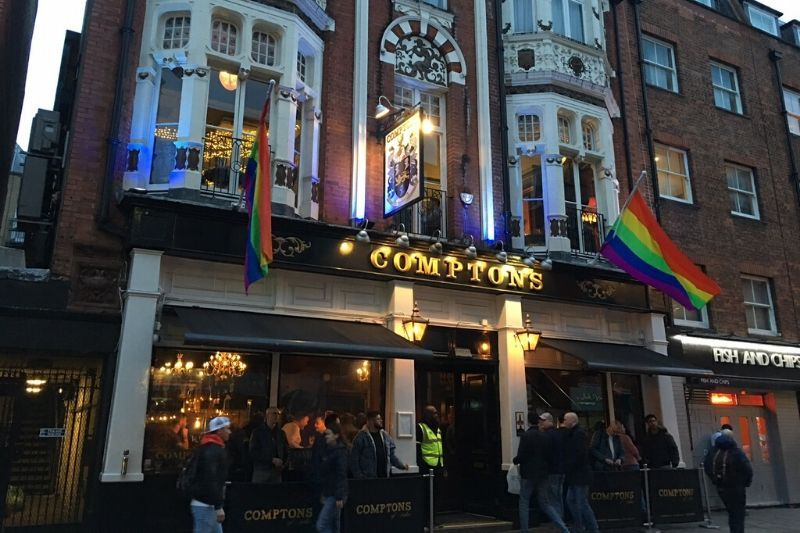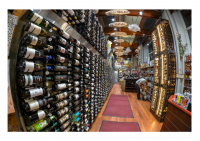Log in to your account
Lost password?Distribution
Top 10 objections from the pubs and restaurant wine buyers and how to overcome them
You might not be a stranger when it comes to wine selling to restaurants, but a few pointers always help in those crucial moments when you're making your big pitch.
14/07/2020

Getting placements in pubs, bars and restaurant accounts where space is limited is more challenging than getting a placement in a wine store. Here are the top 10 objections you may face. We chat with Sid Patel, organizer of Sommeliers Choice Awards and founder of Beverage Trade Network on how to overcome them.
1. Price
Offering your restaurant buyers wines that are priced correctly for their customer profile is the key. Prepare your pricing list in advance and take the list of the wines they will be tasting while you pitch. Offer by the glass price and show them competitive pricing of leading brands in that category for comparison. If you have 90+ scores, add them.
2. Resistance to change
What your restaurant wine buyer may say is we don't sell that category or have a consumer for that. You may be selling a varietal that your restaurant customer is simply not interested in selling. If you see that the category is growing and can support by stats, your restaurant buyer may get interested in listening to you and may buy your wine.
3. Trust
Trust comes in product, person and the company. They need to see you have a proven track record of helping restaurants, they need to see your wines work and do well and they need to believe you. Lot of ways you can overcome trust, you can tell them to start with 6 bottles, offer the friday tasting, come and deplete the stock, help create awareness that your wines are now available at their restaurant. Restaurant wine buyers will want to see your results and work ethic instead of your words. Trust is something you will need to develop slowly especially if you are a new supplier for that restaurant. If you already do business and have a proven track record then focus on the product trust. Lot of restaurants also fear that you may not be able to carry that vintage and product consistently. Last thing restaurants want to do is add your wine in their menu and be out of stock. So focus on stock assurance as well.
4. Menu redesign
This is the one I faced a lot. Lot of restaurants dont want to design their menu, so it is important to keep pitching wine by glass programs for now and help them create temporary table tents and when they redesign their menu you want to be right there in the line for consideration. You can also offer them picking the entire cost of new menu printing and design if budget allows you. Big brands and distributors usually do this for their restaurant customers so you may want to consider splitting the cost with them or any other new supplier that the restaurant buyer is considering as well.
5. Can't afford case buys
This one is simple. They are not looking to build inventory of a new product they are not sure off. Be patient and offer them bottle buys and once your wine is on their menu and see’s movement, you can focus on case orders in your 3rd PO.
6. Third party promises
Restaurant buyers may say i have promised the malbec spot to this new supplier already. This kind of objection is hard to overcome. In most cases a good idea is to convince them to try yours as the second option instead of convincing them to replace their promise to your competitor. You may ask about your competitor pricing and do a better deal.
7. Other distributor relationships
This one is huge. The real problem is not that you have a competitor but the problem is that competitor takes care of their point of sale cost, menu design cost, neon lights, posters, coasters, and most importantly their products do well and they are big brands that consumers are safe in ordering. Only way is to ask the restaurant to give you a chance and after that you need to focus on developing your relationship by making your ‘new wine’ the no 1 or no 2 best seller in their wine list. If your wines sell - everything works. And you need to make that happen as a supplier.
8. No brand awareness
You need to come up with a plan on how you will create awareness so consumers ask your wine. You don't need to spend thousands of dollars, but you can start with friday or saturday tastings, winemaker dinners and small events that you can do to create awareness. Social media is also a great way to create awareness for your wines that you now sell in this restaurant. More important is come up with a tactic where you can make customers buy a glass of your wine, like if you go to this steakhouse and order our glass of wine, and send us a pic - you are our guest and get a free tasting at our winery this weekend.
9. Varieties don't fit
A good idea is to show 2-3 wines that you think fit the restaurant profile, the time of the year and the style of the buyer. Sometimes, sommeliers and buyers may not be aware of trends in other cities so you can show them the stats on that variety and back up with some data. Lot of times, sommeliers want to try new things and be trend makers in their town. For example no 3 varietal in New York this month as far as sales goes, may not be on the radar of a San Francisco wine buyer and you can show them that.
10. Seasonal and timing
During the last quarter stay out, don't pitch so many reds in summer months, don't pitch champagne in March and so on. Don't pitch during their slow times, don't pitch when your current product is not performing. If their Cabernet Sauvignon sales are 50% and they only have 2 cabernet sauvignon out of 20, adding a 3rd one with super low price and super high price may be a good approach. In march, pitching them roses and whites is a good idea. Come up with theme and ideas that can generate foot falls for them and timing it with the month of the year is also a good idea.
Lot of objections can be overcome by simply pitching the right restaurant and pitching them the right wine. As we often say ‘know your customer’, it really boils down to the style of the restaurant, how formal is the restaurant, checking their current wine list, identifying their needs and the timing of the pitch.
The second thing that producers need to focus on is how the approach is, pay attention to how the buyer buys and the procedure of that restaurant when it comes to buying new products, ordering system, menu redesign process.
There are few other articles you can also refer to that can help you pitch better:
How to sell your wines effectively in restaurants.
10 Tips to grow your wine’s on-premise brand presence.
How to boost your wine distribution in restaurants.
Getting your wines in restaurants not only helps you grow your wines sales, but its vital for building a long lasting wine brand. We hope with the above tips, you can design a plan and prepare your sales staff on effectively selling in the wine on-premise channels.
About the Author:
 Sid Patel, CEO and Founder, Beverage Trade Network, Get Drinks Delivered, London Drinks Guide, IBWSS, London Spirits Competition, BevRoute, Sommeliers Choice Awards, Bartender Business, USATT, Cannabis Drinks Expo, International Bulk Wine and Spirits Show, USA Trade Tasting.
Sid Patel, CEO and Founder, Beverage Trade Network, Get Drinks Delivered, London Drinks Guide, IBWSS, London Spirits Competition, BevRoute, Sommeliers Choice Awards, Bartender Business, USATT, Cannabis Drinks Expo, International Bulk Wine and Spirits Show, USA Trade Tasting.
About Sommeliers Choice Awards
 The goal of the Sommeliers Choice Awards is simple: to provide on-premise buyers and sommeliers a valuable benchmark for understanding which wines would make a compelling addition to a wine list.
The goal of the Sommeliers Choice Awards is simple: to provide on-premise buyers and sommeliers a valuable benchmark for understanding which wines would make a compelling addition to a wine list.
The judging panel of the Sommeliers Choice Awards will consist entirely of top sommeliers, on-premise wine buyers and wine directors at U.S. restaurants, bars, pubs, and clubs. In order to be selected as a judge, sommeliers need to provide evidence of their expertise within the on-premise industry. In some cases, these sommeliers may also be wine consultants for on-premise establishments. They may also have a buying role in addition to working on the restaurant floor.
















